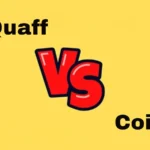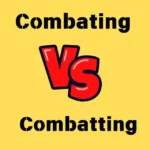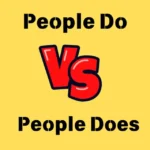In the digital age, abbreviations and notations have become a common part of online communication.
One term that often puzzles users is [sic meaning in text]. Frequently seen in articles, social media posts, or chat conversations, “sic” has a distinct purpose that goes beyond casual texting.
Many people search for its meaning to ensure they interpret messages correctly, especially when encountering what appears to be a typo or unusual phrasing.
Understanding this term can help readers avoid confusion and accurately grasp the intended message.
Whether you are reading formal writing or informal online chats, knowing [sic meaning in text] ensures clarity and improves communication in various contexts.
Meaning & Definition
The term “sic” is a Latin word meaning “thus” or “so”. In writing, it is placed in brackets—[sic]—immediately after a word or phrase to indicate that the quoted material is reproduced exactly as it appears in the original, even if it contains errors.
Essentially, it tells the reader: “This is exactly how it was written.” The notation assures readers that any grammatical mistakes, spelling errors, or unusual expressions are part of the source and not a transcription error by the person quoting it.
Background
Originating from Latin, sic has been used for centuries in academic and legal texts to maintain authenticity when quoting documents. Over time, it has evolved from scholarly writing into everyday use online.
While traditional usage was primarily formal, modern digital communication has adopted it for clarifying errors in text messages, tweets, or Instagram posts. Its versatility makes it relevant across multiple domains, from casual conversation to professional reporting.
Usage in Different Contexts
The application of [sic meaning in text] varies depending on the platform or context:
- Academic Writing: Authors use [sic] to indicate that a quote contains original errors.
- News & Journalism: Reporters include [sic] when quoting statements verbatim to avoid misrepresenting a source.
- Social Media: Users apply [sic] humorously or sarcastically to highlight typos or funny language.
- Chats & Messages: Friends or colleagues may use [sic] to playfully point out mistakes without directly correcting someone.
This flexibility makes it a useful tool for clarity, humor, and emphasis.
Meaning in Chat, WhatsApp, Instagram, TikTok
In informal online settings like WhatsApp, Instagram, TikTok, or other social apps, [sic] is often used more playfully. Users might comment on a friend’s typo, a celebrity’s awkward phrasing, or even a trending meme.
Here, the emphasis is not academic accuracy but humor or emphasis. Despite its casual use, understanding the original meaning ensures that readers recognize it as a deliberate marker rather than part of the error itself.
Meaning in Physics, Medical, and Aircraft Terminology
Interestingly, sic also appears in professional fields with distinct definitions:
- Physics: Sometimes used to denote silicon carbide, abbreviated as SiC.
- Medical Terminology: SICS may refer to Small Incision Cataract Surgery in ophthalmology.
- Aircraft & Aviation: S.I.C can stand for Senior Instrument Controller or similar technical roles.
Though context-dependent, distinguishing these meanings prevents misinterpretation in professional environments.
Common Misconceptions
A frequent misunderstanding is that [sic] implies criticism or mocking. While it can be used sarcastically online, its primary function is neutral—to indicate exact reproduction of the source text.
Another misconception is confusing sic with typos; readers should know it is a conscious insertion by the writer, not an error.
Similar Terms & Alternatives
Other expressions convey similar ideas:
- “As is” – indicates content is presented without alteration.
- “Quoted verbatim” – stresses faithful reproduction.
- “Exact wording” – clarifies precision in citation.
While these alternatives exist, [sic] is unique in its concise, bracketed form and wide recognition.
How to Respond to It
When encountering [sic] in conversation:
- Understand the error is from the original source.
- Avoid correcting it if quoting.
- In informal contexts, respond with humor or acknowledgment.
- In professional settings, note it for accuracy without editing the original phrasing.
Differences from Similar Words
Unlike typo, error, or mistake, [sic] is not the problem itself—it is a marker of authenticity. It communicates that the surrounding text, though possibly wrong, is intentional in reproduction.
Relevance in Online Conversations & Dating Apps
In modern communication, including dating apps, [sic] helps clarify messages when grammar or spelling might create misunderstandings.
It ensures that readers interpret messages accurately and can even add a humorous touch when playful banter is involved. Its subtlety makes it a versatile tool in digital communication.
FAQs
What does [sic] stand for?
It is Latin for “thus” or “so,” showing quoted text is exactly as in the source.
Should I use [sic] in chats?
It can be used playfully, but it’s mostly formal in writing.
Does [sic] indicate a mistake?
Not necessarily; it shows the original text contains errors, not the writer’s.
Is [sic] the same as a typo?
No, [sic] is a marker to indicate a typo or unusual phrasing in the source.
Can [sic] be used in social media?
Yes, often humorously to highlight errors or odd phrasing.
How do professionals use [sic]?
They use it to quote content verbatim in reports, academic papers, or legal documents.
Conclusion
Understanding [sic meaning in text] is essential for both formal and informal communication.
Its use ensures clarity, preserves authenticity, and prevents misinterpretation of quoted material.
Whether encountered in scholarly writing, social media posts, or casual chats, recognizing [sic] helps readers navigate errors without confusion.
With its evolving role in digital communication, mastering its meaning enhances comprehension across platforms, from academic articles to WhatsApp messages.
The notation’s simplicity belies its importance, making it an invaluable tool for accurate and clear communication in today’s text-driven world.











